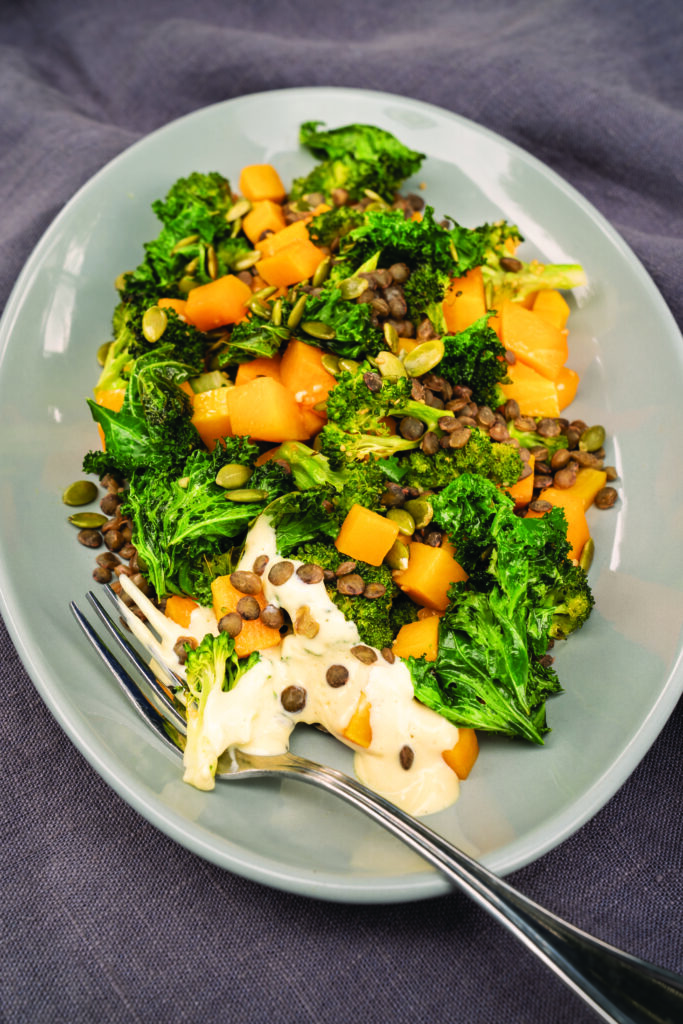Pulses are commanding a lot of attention these days. We’re not talking about your heart rate, but rather we’re exploring—and enjoying—the perfect plant food.
Pulses are among the world’s healthiest foods, offering plenty of goodness that can certainly be linked to a healthy heartbeat. They’re an excellent source of protein, virtually free of saturated fat, and super high in minerals and fibre. And that’s not all: scientific studies have shown that diets rich in pulses are proven to reduce cholesterol—a key factor in reducing heart disease.
There is confusion in some people’s minds about exactly what is included in the term “pulse.” Is it a lentil? Is it a legume? Is it a bean and/or a pea? The word “pulse” refers to the seed within the legume; “legume” refers to the entire plant—leaves, stems, and pods—while the “pulse” is the edible seed from the legume plant. The most commonly known and consumed pulses include dried beans, peas, lentils, and chickpeas.
Canada is a primary grower of pulses. Our prairie climate offers the perfect landscape for growing these nutritional powerhouses, with Saskatchewan being one of the world’s largest producers and exporters of lentils, while southern Ontario and Quebec are major producers of beans.
While the world focuses on the definitive benefits of focusing on plant-based diet choices, pulses are the hip and darling foods of our day—and they’re here to stay. Pulses are not only the stars in delicious plant-based recipes but also trending their way into mainstream plant-based faux meat products.
The Food and Agriculture Organization of the United Nations named 2016 the International Year of Pulses as “nutritious seeds for a sustainable future.” Pulses were highlighted not only because of their powerhouse nutritional content but also because their production “helps farmers maintain household security, creating economic stability.” Pulses can also promote soil biodiversity and climate change mitigation by reducing the need for synthetic fertilizers.
In our no-fuss recipe collection this month, we’re featuring pulses in their truest form—offering oodles of lip-smacking flavour. Add to this the fact that pulses are cheap to buy—especially in bulk—and easy to store. But more importantly, they carry any dish a long way toward satiability while providing both nutritional <and> environmental benefits.
Smoky Fire-Roasted Tomato and Bean Soup


Colourful Roasted Veggies and Lentils with Crisped Kale and Creamy Vegan Mayo


Black “Caviar” Lentils Tumbled Over Creamy Yogurt with Mint

Eating pulses is a super way to increase plant protein in your diet. But what to do about the possible side effects? If you’re not used to eating pulses, start with smaller portions and go from there. And follow these easy steps for degassing carb-rich pulses. As your body adjusts, the side effects will dissipate.
- Soak dried beans well and long—the longer the better. Then rinse well before cooking.
- Sprout lentils to improve digestion if, despite being smaller and easier to digest, they still create a problem for you.
- Cook beans until very soft. This also can be applied to canned beans.
- Add 1 teaspoon (5 mL) baking soda to soaking or cooking water. It helps digestion and also speeds up cooking. Be sure to rinse well, removing the oligosaccharides—the bloat-causing sugars—after cooking.
- Drink plenty of water.
- Chew your food thoroughly and slowly.
- Add ajwain (Indian spice also known as carom seeds) or epazote (Mexican herb used for flavouring and for its antiflatulent properties) spices to your dish. Ginger and cumin may also help.
- Rinse canned beans well.
- Visit your natural health store for over-the-counter digestive aids.
Pulses are not only good for you but also good for the environment.
- As they grow, pulses produce compounds that feed diverse soil microbes that, in turn, benefit soil health, crowding out disease-causing bacteria and fungi and creating healthy soil for other crops in rotation.
- Pulses require less greenhouse gas-emitting fertilizer because of the microbial diversity they create in the soil, including the ability to convert nitrogen in the air into a form of nitrogen that plants can use.
- Less water is needed to grow pulses; they can grow in semi-arid conditions and can tolerate drought stress.
For more pulse wisdom
Go to <alive.com> and search for “Healthy Beans: Good for Us and the Planet” where you can find more on the benefits of this wonderfully versatile superfood along with handy cooking tips.
Good carb fuel
Typically, foods high in carbs jack up one’s inner glucose meter, but not all carb fuel is bad. Pulses—rich in fibre, protein, and vitamins—offer something very different: during digestion, they provide slow-release fuel, controlling blood glucose levels. If you have diabetes or are at risk for diabetes, replacing other starchy foods in your diet with pulses is one of the best ways to control blood glucose and, as a bonus, reduce blood cholesterol.


